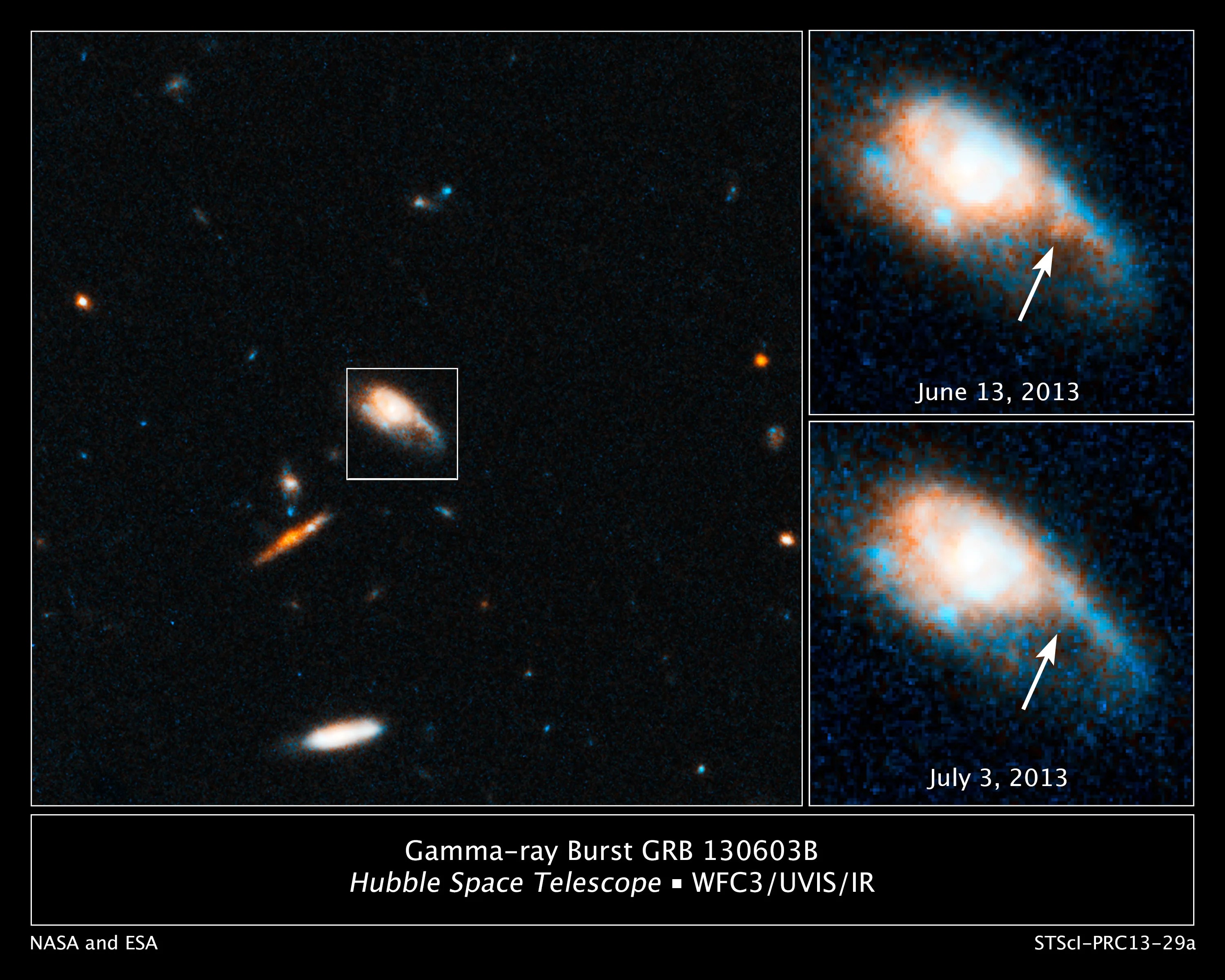2 min read

These images taken by NASA's Hubble Space Telescope reveal a new type of stellar explosion produced from the merger of two compact objects.
Hubble spotted the outburst while looking at the aftermath of a short- duration gamma-ray burst, a mysterious flash of intense high-energy radiation that appears from random directions in space. Short-duration blasts last at most a few seconds. They sometimes, however, produce faint afterglows in visible and near-infrared light that continue for several hours or days and help astronomers pinpoint the exact location of the burst.
In the image at left, the galaxy in the center produced the gamma-ray burst, designated GRB 130603B. The galaxy, cataloged as SDS J112848.22+170418.5, resides almost 4 billion light-years away. A probe of the galaxy with Hubble's Wide Field Camera 3 on June 13, 2013, revealed a glow in near-infrared light at the source of the gamma-ray burst, shown in the image at top, right. When Hubble observed the same location on July 3, the source had faded, shown in the image at below, right. The fading glow provided key evidence that it was the decaying fireball of a new type of stellar blast called a kilonova.
Kilonovas are about 1,000 times brighter than a nova, which is caused by the eruption of a white dwarf. But they are 1/10th to 1/100th the brightness of a typical supernova, the self-detonation of a massive star.







